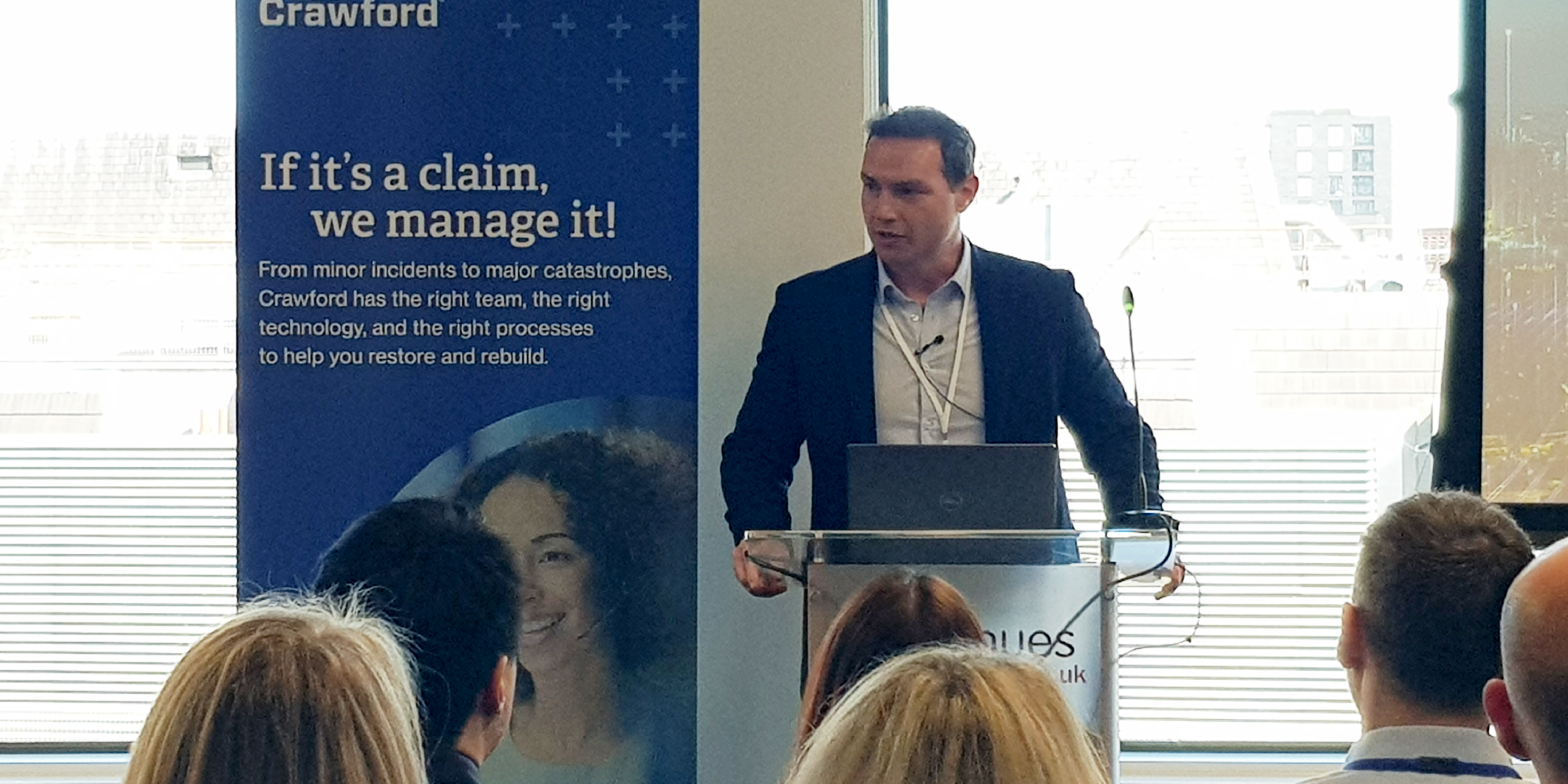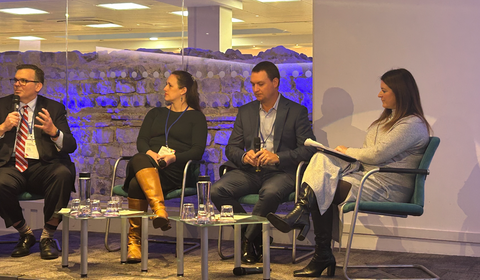PFAS: Know the risk, manage the impact
Presented by Principal Environmental Director, Alistair Donohew, and Environmental Consultant, Robert Latimer
Alistair opened by introducing us to PFAS or polyfluoroalkyl substances. These manufactured chemicals have been around since the 1930s and their near indestructability has seen them used in countless applications, with their most prolific form being as coatings for non-stick cookware. However, PFAS have been found harmfully building up in the human body. They have now earned a place amongst what are known as “forever chemicals” and class actions are being taken against the U.S. manufacturers. Robert then confirmed that PFAS have been found at a number of sites in the UK and that Crawford is already advising both regulators and clients on meeting the challenges at multiple touch points: past manufacturers with potential liabilities to employees as well as nearby communities; developers who’ve acquired older brownfield sites now need to consider management, mitigation and disposal; communities near older sites are deeply concerned for their health as well as property values. Robert defined this as a complex landscape for insurers with little, if any, UK claims data to provide precedence or guidance for reserving – but he also reassured the room that Crawford can help with understanding the issues and provide guidance for a pragmatic, risk-based approach.
The impact of clandestine entry to the UK
Presented by Chief Marine Surveyor, James Brook
James took us through the most common methods of accessing HGVs to insert clandestine passengers, from a simple hole in the roof to tampering with locks and seals, as well as opportunities presented during transit – particularly when logistics obliged drivers to park up overnight, often in poorly lit or unsecured truck stops. People climbing across loads to hide in them causes breakage, but the act of living amongst the load for hours or days can also cause additional damage through pollution. James walked us through the process of surveying and assessing such claims, prioritising perishable goods where possible, working through a load to see what has been damaged or stolen as well as agreeing what’s safe to salvage, what must be written off and who is liable. There’s also the aspect of the cargo’s value – is liability set at manufacturer costs or retail costs and are the policy limits clearly defined? Plus, if part of the trip has been assigned to sub-contractors, are they adequately covered?
Trends in underinsurance
Presented by Angus Osborne-White, technical director of Crawford Forensic Accounting Services and Neil Middleton, senior loss adjuster with Major & Complex Loss team
Neil opened by outlining the drivers behind underinsurance. External factors such as rapid high inflation, broken supply chains, tariffs or onerous changes to building regulations can affect repair or replacement values. Some drivers are human factors – people are time-poor and budget conscious and research suggests a growing trend to buy a policy that suits the pocket, not one that provides the required cover. But Neil, who also advises high net worth insurers, reminded us that even the wealthy can trip up. The attitude that there is a buffer zone of cash to replace a stolen but underinsured high-end watch is fine – but what if their underinsured eight-bed mansion and all its contents is lost in a whole-house fire? Neil closed by reminding us that business is complex, being a homeowner is complex – but so, too, are insurance policies and that the growing trend for underinsurance is often due more to misunderstanding than malice. At this point, Angus took up the narrative, showing examples of claims which had been impacted by underinsurance and demonstrating that even the willing application of an average settlement can still fall well short of actual reinstatement values – a particular disadvantage in business interruption claims. Angus advocated regular reviews of cover and asset values, obtaining detailed accounts, checking for limits of liability and taking a hard look at indemnity periods, particularly where external factors might cause reinstatement times to become protracted.
The future of farming
Presented by ARIEL Technical Lead, Jane Hunter
Jane advised the room that the world’s population is booming, meaning more people need sustenance and so putting pressure on farmers to meet ever increasing demand while remaining profitable. UK farmers are diversifying to help cope: redundant buildings are being let as storage units; quaint but no longer fit-for-purpose barns are being repurposed as wedding venues. Great ideas, but suddenly farmers are dealing with the public in large numbers, presenting risks that need assessing and managing. The future may also lie in electronic tagging of livestock, drones for tracking them and robotics – but still with humans in the loop, to operate and maintain the machines. There’s lateral thinking, too: cattle feed that creates less methane; swapping glasshouses for cheaper to build, cheaper to repair polytunnels; using oxidising agents to clean machinery to save precious water. Jane closed by reminding the room that, no matter which direction the future of UK farming takes, there will always be risk to be managed and her team will always be there to help.
Cybercrime: How attackers target businesses
Presented by Head of Risk Consulting, Sarah Brown, and Lauren Wills, lead incident responder & cyber risk consultant
Sarah began with some eye-opening statistics: currently, half of all business owners believe that generative AI will be used to enhance cybercrime; 35% of all cyberattacks in 2024 were driven by ransomware; by 2027 the global cost of cybercrime will be around $23 trillion - this crime wave is not losing momentum any time soon. While some losses are due to genuine accidents and errors, Lauren summarised the main tactics used by the so called ‘threat actors’:
- Business email compromise: impersonating business colleagues, attackers use bogus emails to trick recipients into releasing sensitive data or transferring money
- Ransomware attacks: sensitive data is ‘kidnapped’ and sold back to the business
- Malware and viruses: software inserted into vulnerable systems, some of which can read every keystroke made by innocent users, providing fuel for further theft or deception
- Denial of service: threat actors send massive volumes of email traffic to overwhelm a system, blocking authorised users
- Insider threat: a genuine employee accesses and steals data, funds, or both
- Sophisticated threat actors have even developed RAAS – ransomware as a service – to sell or rent amongst themselves
Finally, Lauren touched on AI, showing a deepfake video to demonstrate how convincing these can be as part of a cyberattack. The consensus was that prevention of cybercrime is infinitely better than the cure, making proactive and regularly updated risk management strategies vital to early threat detection and prevention.
The event was closed with a comment by John Humphries, operations leader, Specialty, that he hoped that the day had demonstrated the depth of expertise across a breadth of specialist sectors available at Crawford.



